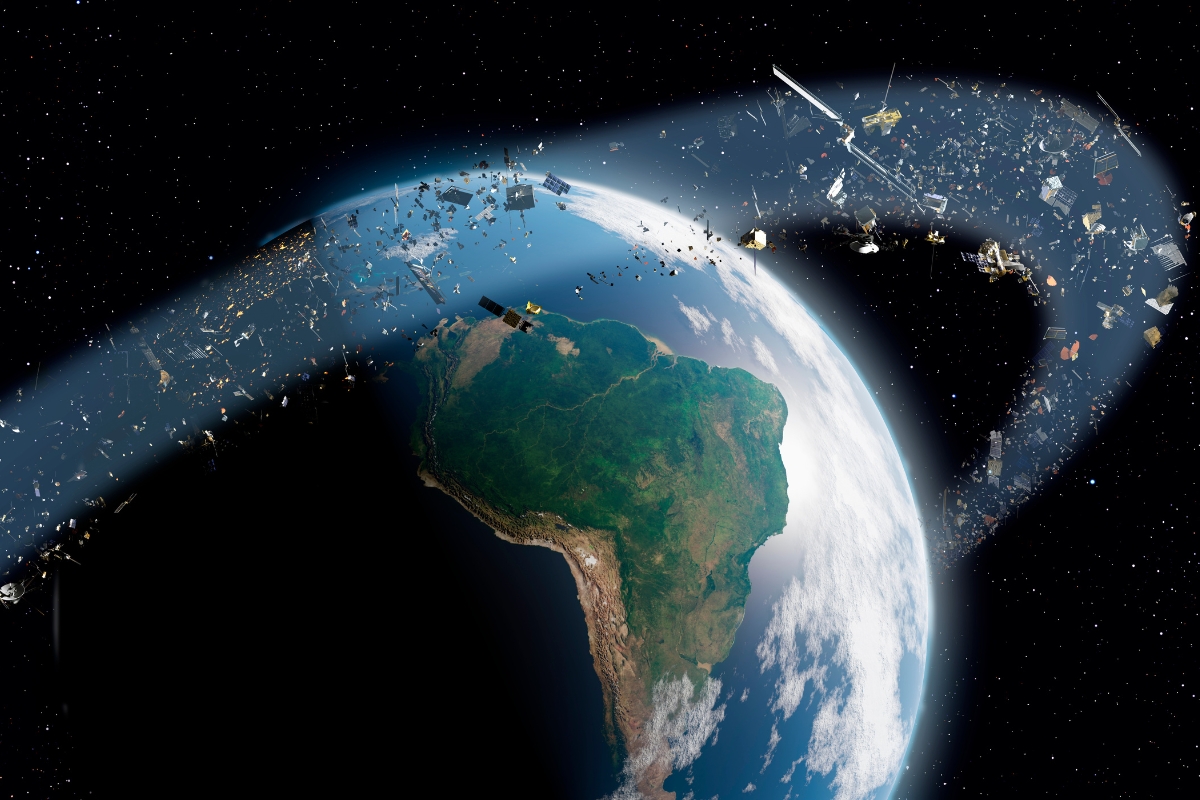Space is vast, almost incalculably huge. And yet we’ve still found ways to pollute the area immediately surrounding our home planet, proving once again that you’ll know exactly where the human race is been by the garbage we leave behind.
That’s what we’re doing to the Earth’s orbit, according to the European Space Agency. They say that there’s way too much space junk floating around out there and it’s already making space travel a lot more dangerous.
Videos by VICE
While I recently reported on companies out there trying to solve the problem by creating satellites that could eat other satellites, the solutions aren’t being developed fast enough to avoid potential disasters.
What Can We Do About All of That Space Junk?
Every time a government or private company rockets a satellite into space, we create more space debris. Sometimes it’s a satellite that broke apart, or maybe it’s the explosion of a rocket stage that doesn’t quite make reentry. Whatever it is, we put it there, and now the area just outside of the Earth’s reach is riddled with garbage.
A 2025 Space Environment Report said that monitoring programs here on Earth are currently tracking around 40,000 objects polluting the Earth’s orbit, with only 11,000 of those being active satellites. The rest is just trash that can potentially puncture a hole in the side of a space capsule or the International Space Station.
The trash we’re putting up there is concerning enough. Here’s an even more concerning aspect: even if we stopped launching satellites right now, the junk would continue to accumulate thanks to something called the Kessler syndrome.
It’s a theory proposed by a NASA scientist named Donald Kessler that describes a nightmare scenario for space travel. The idea is that there are so many satellites and so much orbital debris floating around out there that they start colliding with one another, thus creating more debris.
That would cause more collisions, causing more debris, and so on. Earth’s orbit could eventually become a minefield of high-speed metal shrapnel, making certain orbits unusable for decades.
That number of 40,000 objects I mentioned earlier? That’s just how much is trackable from here on Earth. The actual number of objects larger than four inches floating through Earth’s orbit is closer to 54,000.
If you want to shrink it down even smaller to objects between one and 10 centimeters, there are an estimated 1.2 million out there. There are an estimated 130 million pieces of garbage between one millimeter and one centimeter. A lot of that is metal that could potentially damage a satellite or ship.
The only bit of good news is that there were more successful atmospheric entries for rocket stages in satellites in 2024 than in previous years, so space agencies and private companies are getting better at making sure their trash makes it back down to Earth to be collected and disposed of.
But there’s still a lot of garbage up there that could potentially cause massive problems, and we don’t have many solutions for right now.
